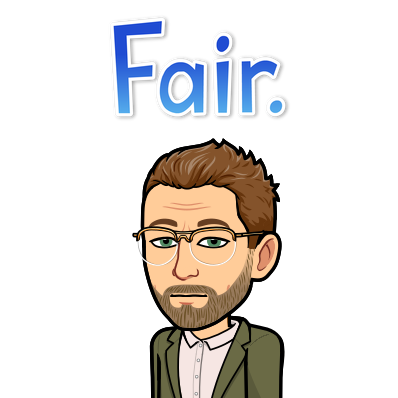“Let me explain. No, there is too much. Let me sum up.”
In the line above from 1987’s classic film The Princess Bride, Inigo Montoya is speaking of all the events leading up to his impending attempt to storm a heavily fortified castle. The sentiment holds true for this reflection on the end of the second class in my DLL program, so I’ll go with it.
Over the past 5 weeks in the EDLD 5303 course, I’ve been building and revising my ePortfolio, in order to reflect on and demonstrate what I’ve learned and am learning.

There are many things I could point to as examples of my learning in this course. I could talk about the idea that the most useful purpose of the Eportfolio is self-reflection and feedback, and that, in the end, the most important audience for the ePortfolio is oneself. I don’t think there’s a single blog post related to EDLD 5303 on this site that doesn’t touch on that idea in some way, but big ones are this one and this one.
I could point out that, in this class, we have been able to both inhabit and enact the CSLE+COVA model, as learners and as teachers. In fact, we’ve been able to be both at the same time. In the CSLE+COVA model, “The learner is not only an active participant in the learning process; they are required to take control and ownership of their learning and work toward making meaningful connections;” meanwhile, “The instructor functions as a presenter, facilitator, coach, and mentor and is responsibility for creating the significant learning environment that promotes learning” (Harapnuik, Thibodeaux, & Cummings, 2018, p. 58). In this course’s structure, not only have we determined the goals and direction of our work, in many ways we have created our own learning environment. Being able to see this in action from both sides has helped me to start implementing the CSLE+COVA model in my own classroom.

But I think the most significant takeaway from this course for me has been making and recognizing the “meaningful connections” mentioned above. I believe that Harapnuik et al. intended that phrase mostly in the context of learning, of connecting ideas. The two brain systems laid out by Kahneman (2011) have gotten a vigorous workout in my own brain during this coursework; System 1 thinking, focusing on the familiar, helped me frame the COVA idea in terms of music rehearsals and handcrafts. This comfortable framework, in turn, helped me “slow down” my thinking to a more System 2 mode, letting me turn the CSLE+COVA idea into something new that could enhance the familiar and help tackle new challenges. To put it another way, using concepts I was familiar with helped me grasp the “what” and “how” levels of Sinek’s Golden Circle model (2009), and internalizing those things have helped lead me to the “why” of the ePortfolio, both in the smaller-scale sense of why an ePortfolio is beneficial to learners, and in the broader sense of why I’m hoping to help my students make use of the concept: I want to help them become lifelong learners, to stoke in them the same excitement I feel when I learn a new skill or master a new concept. I may have gotten to my “why” in a somewhat backwards fashion according to Sinek, but I intend to apply the title of this blog to myself as well as my students.

I also feel a takeaway of “meaningful connections” in the collaborative, social sense. The learning network that this course has helped create has been incredibly beneficial to me, and I hope that has been equally true for my classmates. I wrote a little about the social benefits in my last post, but in addition to that, the collegial support of both the class as a whole and the small groups we formed ourselves has been invaluable, and I am certain that will continue as the program does.
Finally, as a quick addendum, I do want to take a moment and “pre-reflect” on something that I hope will continue to be meaningful. In my last post, I referenced a line from the 1939 book Wind, Sand, and Stars by Antoine de Saint-Exupéry, the French aviator and author of The Little Prince. In sourcing that quote, I came across other things that Saint-Exupéry wrote, many of which seemed incredibly apropos to education (and which are now on their way to my doorstep–thanks, Amazon.) This line in particular, from The Wisdom of the Sands (published posthumously in 1950), seems as good a set of marching orders as any as I set out on the next leg of my learning (and teaching) journey.
“Your task is not to foresee the future, but to enable it.”
REFERENCES
Reiner, R. (Producer and director). (1987). The princess bride. [Motion picture]. United States: 20th Century Fox.
Harapnuik, D., Thibodeaux, T., & Cummings, C. (2018). Choice, ownership and voice through authentic learning. Available from http://www.harapnuik.org/?page_id=7291
Kahneman, D. (2011). Thinking fast and slow. New York, NY: Farrar, Straus and Giroux.
Sinek, S. (2009). Start with why: How great leaders inspire everyone to take action. New York, NY: The Penguin Group.
Saint-Exupéry, A. (1950).The wisdom of the sands (S. Gilbert, Trans.). New York, NY: Harcourt, Brace.


